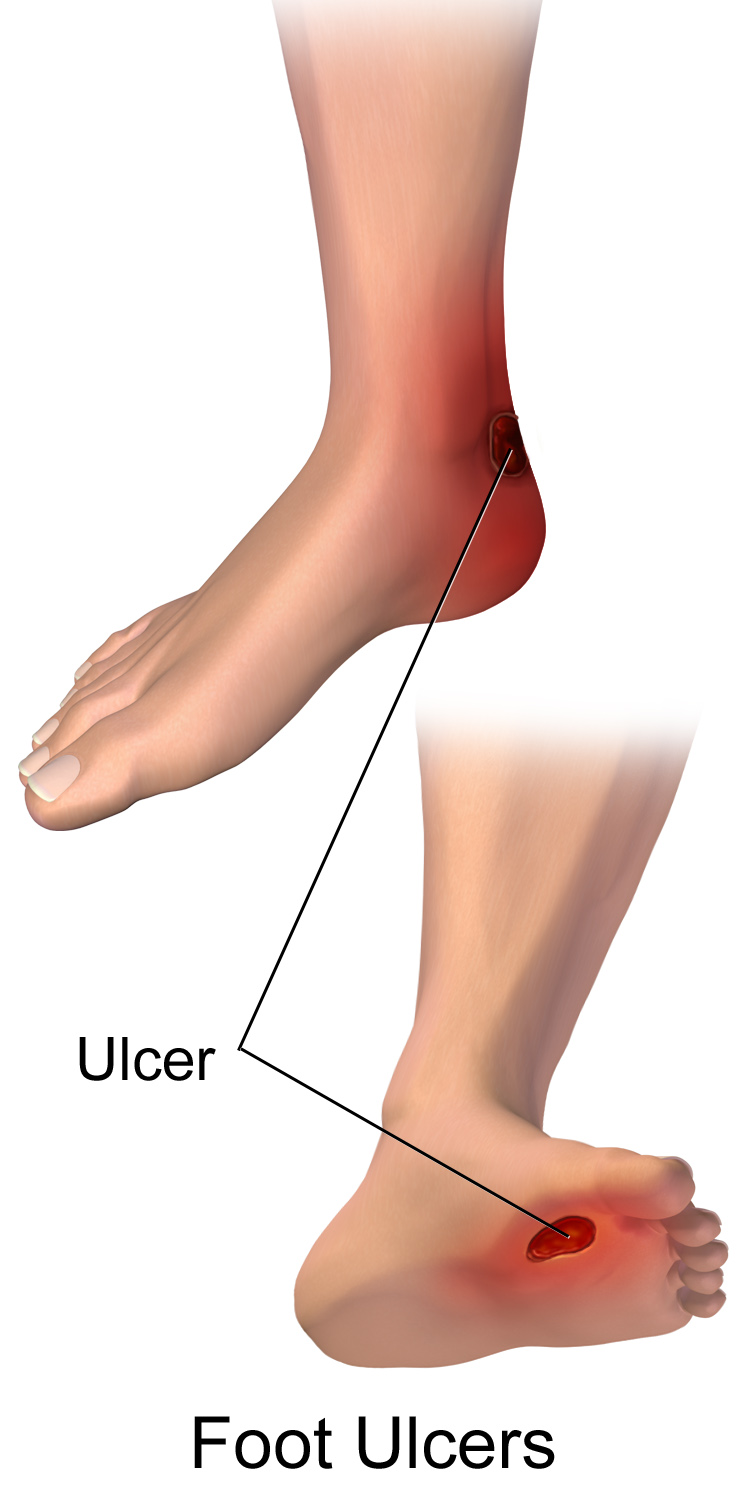
Healing Power Of Hydrotherapy Creams
-
Diabetic ulcers are persistent wounds that can lead to serious complications if not treated properly.
-
Hydrotherapy creams offer a new approach to wound care, promoting moisture retention and healing.
-
These creams contain active ingredients that can reduce infection and accelerate the healing process.
-
Proper application of hydrotherapy creams is crucial for maximizing their benefits.
-
Innovations in diabetic ulcer treatment continue to emerge, with hydrotherapy creams being at the forefront.
Understanding Diabetic Ulcers and Their Impact
What Are Diabetic Ulcers?

Imagine you have a small cut on your foot. For most people, it’s a minor inconvenience, but for someone with diabetes, it could turn into a stubborn wound called a diabetic ulcer. These ulcers are open sores or wounds, usually found on the bottom of the foot. They can develop from a combination of factors, such as poor circulation, lack of feeling in the feet, foot deformities, or friction and pressure from walking or footwear.
Why Diabetic Ulcers Require Special Attention
These aren’t just any cuts. They can be gateways to more serious issues like infections and even amputations. The high blood sugar levels in diabetics can lead to nerve damage, making it hard to feel the pain of these wounds. Without that signal of pain, they can go unnoticed and untreated for too long. That’s why paying attention to foot health is non-negotiable for those with diabetes.
Hydrotherapy Creams: A New Frontier in Wound Care
Defining Hydrotherapy Creams in the Context of Diabetic Ulcers
Hydrotherapy creams are not your average moisturizers. They’re specially formulated to help manage wounds like diabetic ulcers. Think of them as a hydration boost with a purpose. These creams create a moist environment that’s ideal for healing, and they often come with ingredients that tackle bacteria and promote cell growth.
Components and Actions: How Do They Work?
So, what’s inside these creams? They typically have a base of water or gel, combined with active ingredients like antimicrobials, pain relievers, and substances that can help with wound closure. These ingredients work together to keep the wound clean and moist, which is the sweet spot for healing. Because of this, hydrotherapy creams can be a game-changer for those dealing with diabetic ulcers.
Breakthrough Hydrotherapy Creams on the Market
Now, let’s dive into the latest hydrotherapy creams that are making waves in the world of diabetic wound care. These creams are the result of extensive research and are designed to provide optimal conditions for wound healing.
Examining Top Creams: Ingredients and Efficacy
One of the front-runners is a cream known for its moisture-retaining hydrogel base, combined with an antimicrobial agent to reduce the risk of infection. Another popular option contains a peptide complex that can help accelerate the natural healing process. These ingredients are not just randomly chosen; they are backed by clinical studies that show a significant improvement in wound closure rates compared to standard care.
Patient Reviews: Success Stories and Satisfaction
It’s not just about the science; it’s about the people. Patient testimonials highlight the difference these hydrotherapy creams have made. One patient shared how a hydrotherapy cream helped shrink the size of her ulcer within weeks, something she hadn’t seen with other treatments. Stories like this underscore the real-world impact of these innovative products.
Applying Hydrotherapy Creams Correctly
Using these creams isn’t complicated, but it’s important to do it right to get the best results. Cleanse the wound gently, pat it dry, and then apply a thin layer of the hydrotherapy cream. Cover it with a suitable dressing, as recommended by a healthcare professional, to keep the area clean and protected.
Step-by-Step Guide for Maximum Benefit
-
Wash your hands thoroughly before and after touching the ulcer.
-
Gently clean the wound with saline solution or an appropriate wound cleanser.
-
Pat the area dry with a clean towel or gauze.
-
Apply the hydrotherapy cream as directed, typically a thin layer over the ulcer.
-
Cover the ulcer with a clean dressing that’s right for the size and stage of your wound.
-
Change the dressing and reapply the cream according to your healthcare provider’s instructions.
When to Seek Professional Medical Advice

While hydrotherapy creams can be effective, they are not a cure-all. If you notice any signs of infection, like increased redness, warmth, swelling, or an unpleasant odor, it’s time to call your doctor. Also, if the ulcer isn’t improving or is getting worse, professional medical advice is crucial.
Addressing Concerns and Debunking Myths
With any new treatment, there are always questions and doubts. Let’s clear up some common misconceptions about hydrotherapy creams.
Common Myths About Hydrotherapy Creams and the Truth
Some might think these creams can heal ulcers overnight. The truth is, while they can accelerate healing, it’s still a process that takes time. Another myth is that hydrotherapy creams are just glorified moisturizers. In reality, they’re formulated with specific wound-healing ingredients that you won’t find in your everyday lotion.
Most importantly, it’s crucial to remember that hydrotherapy creams are part of a comprehensive treatment plan. They work best when combined with good diabetes management, proper nutrition, and regular foot care.
Example: “I thought the cream would work like magic, but I learned that it’s part of my overall care routine. Together with controlling my blood sugar and keeping my feet protected, the hydrotherapy cream really made a difference.” – Patient Testimonial
Understanding Side Effects and When to be Cautious
Hydrotherapy creams are generally safe, but like any treatment, they can have side effects. Some people may experience skin irritation or an allergic reaction to certain ingredients. Always test a small area first and stop using the cream if you notice any adverse reactions.
Additionally, not all creams are suitable for every type of wound. It’s essential to consult with your healthcare provider to choose the right product for your specific ulcer.
Staying Ahead: The Future of Diabetic Ulcer Treatment
The future looks bright for diabetic wound care. Researchers are continually working on new formulations and delivery methods for hydrotherapy creams. There’s talk of smart dressings that can release medication in response to changes in the wound environment. This could mean even more personalized and effective treatment for diabetic ulcers.
What’s clear is that innovation in this space is driven by the needs of patients. As we learn more about wound healing, the treatments will only get better, offering hope and healing to those who need it most.
Innovations on the Horizon for Hydrotherapy Creams
Looking ahead, the field of wound care is buzzing with anticipation for new developments in hydrotherapy creams. Research is ongoing into bioactive dressings that not only cover a wound but also actively participate in the healing process. Imagine a cream that releases growth factors or stem cells directly into the wound, targeting the healing mechanisms at a cellular level. These innovations have the potential to revolutionize how we treat diabetic ulcers and significantly reduce healing times.
Integrating New Treatment Options with Traditional Care
As we embrace these advancements, it’s vital to integrate them seamlessly with traditional diabetic ulcer care. This means maintaining good glycemic control, regular foot inspections, and wearing appropriate footwear. By combining new treatments with these established practices, we can offer a holistic approach to diabetic foot health that is more effective than ever before.
FAQs
Let’s address some common questions about hydrotherapy creams to ensure you have all the information you need to make informed decisions about your care.
1. What makes hydrotherapy creams different from regular lotions?
Hydrotherapy creams are specifically designed to manage wounds. Unlike regular lotions that simply moisturize the skin, these creams create a protective barrier that maintains the optimal moisture level for wound healing. They often contain active ingredients that can help reduce infection and promote tissue regeneration, which are not found in typical skincare products.
2. Can hydrotherapy creams heal all types of diabetic ulcers?
While hydrotherapy creams are effective for many types of diabetic ulcers, they are not a one-size-fits-all solution. The effectiveness can vary depending on the ulcer’s severity, location, and the individual’s overall health. It’s essential to consult with a healthcare professional to determine if a hydrotherapy cream is suitable for your specific ulcer.
Some ulcers may require additional treatments such as debridement, which is the removal of dead tissue, or more advanced interventions like skin grafts. Therefore, hydrotherapy creams should be considered a part of a comprehensive treatment plan.
-
For superficial ulcers, hydrotherapy creams can often provide adequate healing support.
-
Deeper or infected ulcers may require additional medical interventions alongside the use of hydrotherapy creams.
-
Always follow the guidance of a healthcare professional when treating any diabetic ulcer.
3. How often should I apply hydrotherapy cream to my ulcer?
The frequency of application will depend on the specific product and the advice of your healthcare provider. Generally, hydrotherapy creams are applied once or twice daily. However, the dressing and cream may need to be changed more frequently if the wound is draining a lot.
It’s crucial to follow the instructions on the packaging and any additional guidance provided by your healthcare professional to ensure the best results.
4. Are hydrotherapy creams safe for everyone?
Most people with diabetic ulcers can safely use hydrotherapy creams, but there are exceptions. If you have a known allergy to any ingredients in the cream, or if you have a particularly sensitive skin condition, it’s important to discuss this with your doctor. Additionally, if your ulcer is showing signs of severe infection, you may require different or additional treatments.
5. Where can I buy hydrotherapy creams, and do I need a prescription?
Hydrotherapy creams can be found in pharmacies, some specialty medical supply stores, and online. While some hydrotherapy creams are available over-the-counter, others may require a prescription, especially if they contain certain active ingredients or are part of a more comprehensive wound care kit.
Your healthcare provider can advise you on the best product for your needs and whether a prescription is necessary. They can also guide you on the proper application and follow-up care to ensure that you are using the cream effectively and safely.
Remember, treating diabetic ulcers is not just about the wound itself. It’s about taking charge of your diabetes and your overall health. By staying informed, following professional advice, and using innovative treatments like hydrotherapy creams, you can take important steps toward healing and preventing complications. Here’s to your health and a brighter future in diabetic wound care!


